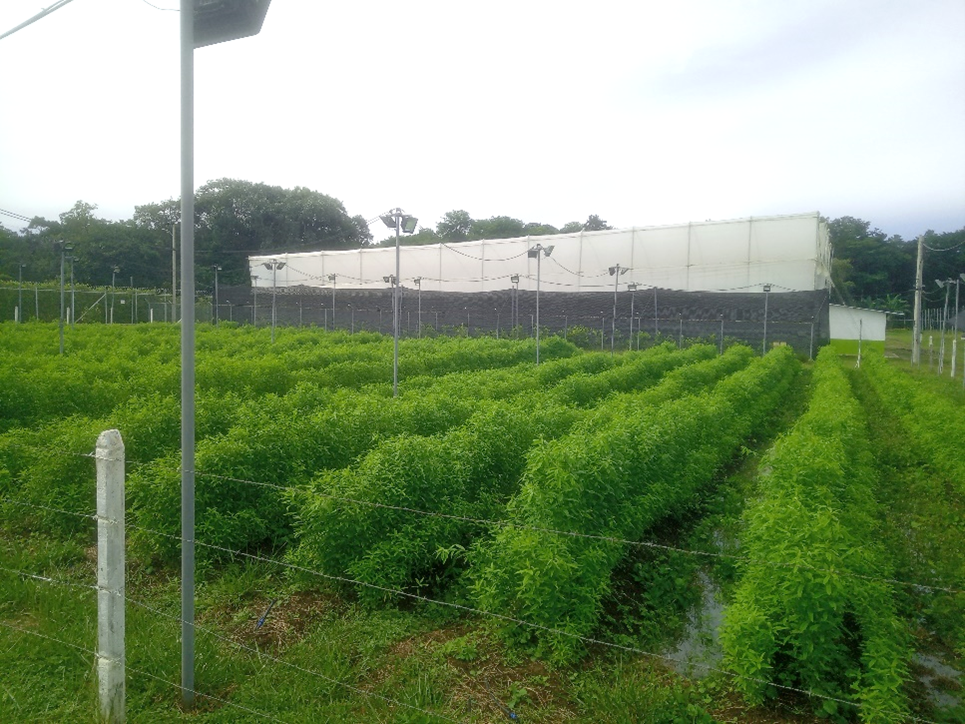Phytoremediation and Hemp
- 6 ene
- 2 Min. de lectura
Phytoremediation is the cleaning or decontamination of soils with the use of plants that participate in chemical and biological processes that improve the quality of soils. It is a very effective and sustainable technique for cleaning and recovering soils for agricultural uses or environmental conservation activities[1].

Source: Phytoremediation and crop rotation with Crotalaria spp. Cassabis.org
By means of this technique, some compounds, especially heavy metals and some petroleum derivatives[1] , are retained, absorbed, decomposed and other processes that contribute to the health and conservation of soils. Some plants used for phytoremediation are sunflower, alfalfa, mustard, crotalaria, and hemp.
Hemp can adapt to different soil conditions; it can absorb metals and store them in its different organs. When hemp is used in phytoremediation, it should not be used in the food or personal care industry, only industrial uses such as fibres and paper are recommended while still monitoring metal content or chemical residues in the biomass.
Since 1998, hemp has been successfully used to remove heavy metals from agricultural land contaminated by the 1986 Chernobyl nuclear disaster. In addition to cleaning soil contaminants, research is underway into the use of hemp fibres to create absorbent material capable of filtering heavy metals from contaminated water[3].

Source: Outdoor Cannabis Cultivation, Cassabis.org
Hemp is one of the most sustainable crops for both small producers and family economy, as well as for agro-industrial models committed to environmental conservation and DHI Integral Human Development, as it improves the quality of contaminated soils and has great agro-industrial potential, in sectors such as bioenergy, paper, fibres, medicine, food and is currently taking an important place in Construction.

Source: Blocks and other hemp-based building materials. Fundación Educando en el Posconflicto FEPC, Norte del Cauca 2024.

Source: COP 16 Cali 2024 Hemp Shoes, Colombia THC Todos Hacemos Cultura, https://todoshacemoscultura.com/
Currently, the textile sector is demanding sustainable raw materials or fibres such as hemp and other natural fibers such as bananas and pineapples. Products derived from this type of fibre have great export potential to specialized markets. Hempcrete, or hemp-based concrete, is becoming a sustainable construction alternative for indigenous cannabis-producing communities in Colombia's Norte del Cauca. With this construction technique, communities preserve traditional methods, improve quality and reduce the environmental impact of the work.
In Cassabis.org you can find an ally for the design of sustainable agro-industrial operations. For more information, see our service offer in https://www.cassabis.org/consultor%C3%ADa
[1] Delgadillo, A. Gonzales, C. Prieto, F. Villagómez, J. Acevedo, O. 2010. Fitorremediación: una alternativa para eliminar la contaminación.
[2] Pesticidas, disolventes, explosivos, petróleos crudos, hidrocarburos poli aromáticos y toxinas.
[3] Placido, D. Lee, C. 2022. Potential of Industrial Hemp for Phytoremediation of Heavy Plants https://www.mdpi.com/2223-7747/11/5/595#metrics
